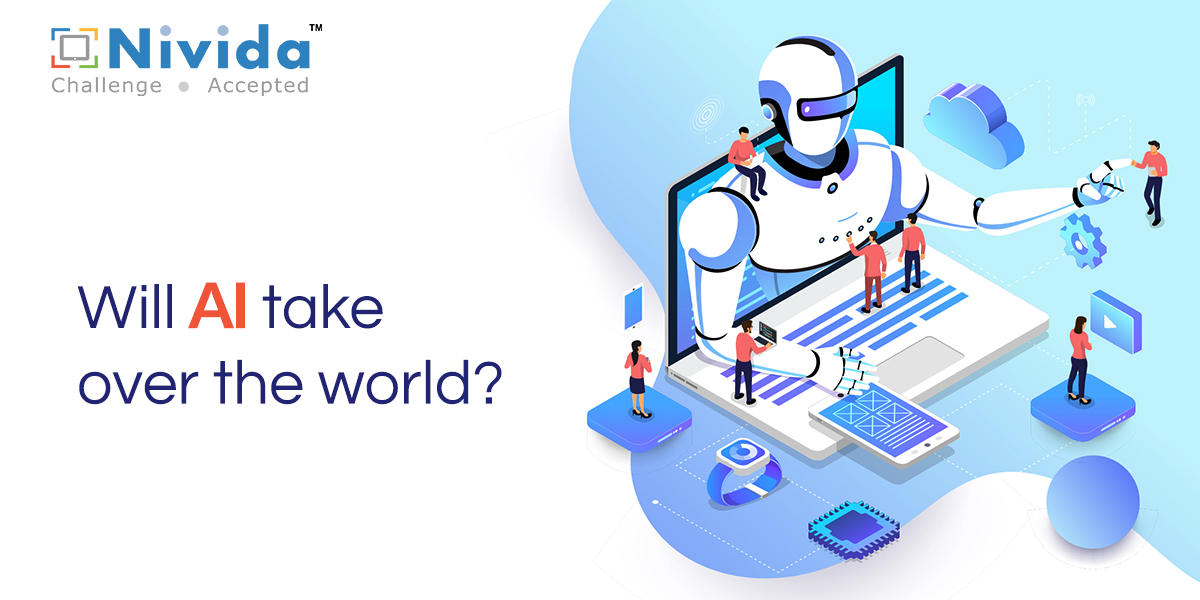From its inception at the frontier of an enterprise's labs of innovation to the present day, when people are only beginning to realise that it can transform businesses from the inside out, artificial intelligence's function has seen a dramatic shift. Reports predict that by 2024, AI would outperform humans in language translation, by 2031, AI will outperform humans in product promotion, and by 2050, AI will outperform humans in surgical procedures. Meanwhile in the year 2023, we can observe the shifts brought by by AI:
Machine Learning (ML):
ML is an AI technique that allows computers to learn from their own mistakes and improve over time without being explicitly taught how to do so. The field of ML focuses on the creation of software capable of accessing and analysing data on its own. ML is the theory that programmes can pick up and make use of new information without any help from humans. ML allows a computer to automatically update its own internal algorithms and to select data from which predictions can be made. ML is useful for storing massive amounts of data and has many potential applications, such as in finance, lending, news reporting, fraud detection, and other areas.
AI at the Border:
There are no bounds to the use of AI in defence and security. Weapon and surveillance systems commonly include AI to improve efficiency. Target recognition, flying training and simulation, and threat assessment are all improved on a regular basis. Most crucially, UAVs, AI robots, drones, unmanned aircraft, etc. may be entrusted with the crucial and perhaps dangerous task of securing the country's borders. Through the implementation of cutting-edge Facial Recognition Technologies, this has the potential to reduce the dangers faced by border patrol agents and provide enhanced surveillance capabilities.
AI in Education:
Distance learning is the way of the future for educational institutions. Already, there is a plethora of platforms offering courses that can be uniquely instructive and accessible at any time, from any location. The administrative burdens placed on teachers and schools can be reduced by the use of AI. Teachers invest much effort into evaluating student work and providing insightful feedback. Categories and paper processing can now be automated thanks to advancements in AI. It's possible that students' Robots will allow for a new kind of education to take place, one that takes place entirely online and is tailored to each individual's needs.
Robotic delivery services are expected to become widespread by 2023. The use of drones in urban medicine will allow for the rapid transfer of reagents and samples between hospitals and labs, far more quickly than is now possible using traditional transportation methods. Tasks such as bomb disposal, working in hazardous conditions, and assembly line production all fall into this category.
AI in Enterprise:
In order to increase output, businesses are turning to AI. Artificial intelligence in the workplace can free up individuals to focus on higher-order duties like coming up with innovative solutions to challenging problems and making a greater effect on the world. Technology may also cause a shift in how we conceptualise work environments. It's possible that work in the future will have a far more fluid structure. There is a possibility that telecommuting and online conferencing may become the standard.
AI in Automobile Industry:
Self-driving cars and artificial intelligence (AI) are frequently discussed together in the IT world. In order to speed up their processes, automakers all over the world are turning to AI. Automakers and engineers are increasingly incorporating AI and ML into vehicle design and operation.
AI in Traffic Management:
Now, AI is utilising its rapid-fire, diverse technologies for use in Traffic Management. These include ATCS, ITMS, Law Enforcement, LMT, and others. Numerous evaluations are propelled by artificial intelligence, and so are the navigation systems of ride-hailing and last-mile delivery services. As more and more cities adopt such intelligent traffic systems, delays in deliveries or order fulfilments that used to be unavoidable can be greatly reduced.
AI in Metaverse:
Wearing VR eyewear allows access to the immersive virtual reality (VR) environment known as the metaverse. There is a lot of potential for it to improve many other industries, including retail, business, and the workplace. A vision of merging real and digital environments through mediums such as VR and AR is encapsulated in the term "metaverse" (AR). The Sandbox, a digital gaming platform, and Decentraland, a virtual environment, are only two examples of the many existing metaverses.

